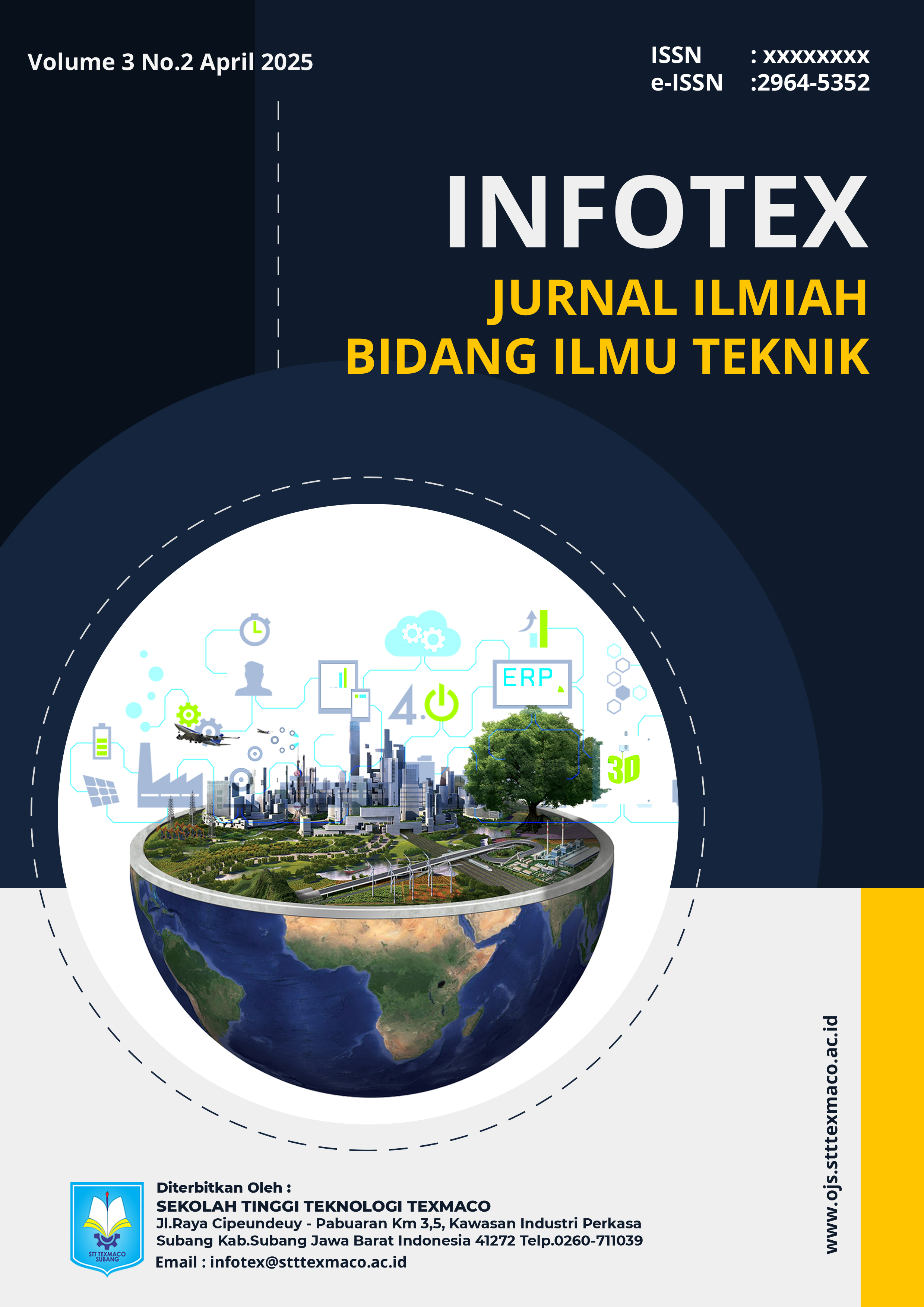Alat Pengering Biji Kopi dengan Memanfaatkan Sensor Soil Moisture Berbasis Mikrokontroler
Keywords:
pengeringan biji kopi, sensor soil moisture, DHT11, mikrokontroler Arduino Uno, otomatisasiAbstract
Coffee bean drying is one of the important stages in the coffee processing process, which affects the quality and taste of the coffee beans. However, traditional methods that rely on sunlight have limitations, especially in unpredictable weather. This study aims to design and realize an automatic coffee bean dryer using soil moisture and DHT11 sensors. The soil moisture sensor is used to monitor the water content of coffee beans, while the DHT11 sensor measures and maintains the temperature in the drying chamber at an optimal limit of 55°C. The test results show that this tool is able to reduce the water content of coffee beans from 59% to 12% in 320 minutes with a capacity of 500 grams of coffee beans. The automatic system works well, where the heating element will activate when the temperature is at the set point of 55°C, and the fan will turn on to cool the temperature when it reaches that limit. The drying process is efficient without reducing the quality of the coffee beans, with an average temperature difference stable at 54°C - 55°C. This dryer provides an effective and efficient solution to overcome the limitations of traditional methods. With the advantages of automation and real-time monitoring, this tool can help farmers and coffee entrepreneurs in producing high-quality coffee beans consistently, without relying on weather conditions.
References
[1] Y. Nurhanisah, “Negara Penghasil Kopi Terbesar,” Indonesiabaik.id. Accessed: May 01, 2024. [Online]. Available: https://indonesiabaik.id/infografis/negara-penghasil-kopi-terbesar
[2] P. E. Wicaksono, “Penentuan Kadar Kandungan Air Pada Biji Kopi Arabika Dengan Teknik Laser-Induced Breakdown Spectroscopy (LIBS),” Skripsi ITS Fak. Tek. Jur. Tek. Fis., p. 90, 2018.
[3] F. M. Borém and E. T. De Andrade, “Processing and drying of coffee,” Dry. Roasting Cocoa Coffee, vol. 3, no. 12, pp. 141–170, 2019, doi: 10.1201/9781315113104-6.
[4] R. Sary, “Kaji eksperimental pengeringan biji kopi dengan menggunakan sistem konveksi paksa,” J. POLIMESIN, vol. 14, no. 2, p. 13, 2017, doi: 10.30811/jpl.v14i2.337.
[5] Yoga A. Musika, “ANATOMI KOPI DAN JENIS BIJI KOPI INDONESIA,” ottencoffee. Accessed: May 20, 2024. [Online]. Available: https://ottencoffee.co.id/majalah/kopi
[6] BITKA, “Mengenal Biji Kopi: Pengertian, Asal, dan Jenis-jenisnya,” bitkaorigin. Accessed: May 20, 2024. [Online]. Available: https://www.bitkaorigin.com/detail/mengenal-biji-kopi-pengertian-asal-dan-jenis-jenisnya
[7] Z. Lubis et al., “Kontrol Mesin Air Otomatis Berbasis Arduino Dengan Smartphone,” Cetak) Bul. Utama Tek., vol. 14, no. 3, pp. 1410–4520, 2019.
[8] A. Anwari and M. Syaefullah, “Rancang Bangun Alat Pengering Cabai Merah Menggunakan Sistem Rotary Dryer Berbasis Mikrokontroler,” vol. 3, no. 1, 2024.
[9] A. Anwari, L. H. Santoso, and I. Mustopa, “Rancang Bangun Alat Siram Bibit Kopi Berbasis IoT Menggunakan Mikrokontroler,” vol. 3, no. 1, pp. 62–72, 2024.
[10] A. Anwari, L. H. Santoso, and ..., “Rancang Bangun Alat Penetas Berbasis Mikrokontroler Arduino Dengan Sistem Backup Tegangan Listrik Menggunakan Aki Di Kurnia Farm,” INFOTEX J. Ilm. …, vol. 2, no. 2, pp. 98–107, 2024, [Online]. Available: https://ojs.stttexmaco.ac.id/index.php/infotex/article/download/83/50
[11] L. H. Santoso, A. Anwari, and F. Adhiel, “Miniatur Alat Angkut Barang Finish Good Berbasis Line Follower untuk Teaching Factory,” vol. 3, no. 1, pp. 49–61, 2024.
Downloads
Published
How to Cite
Issue
Section
License
Copyright (c) 2025 Lilik Hari Santoso, Achmad Anwari, Mohammad Abdul Hamid

This work is licensed under a Creative Commons Attribution-ShareAlike 4.0 International License.






